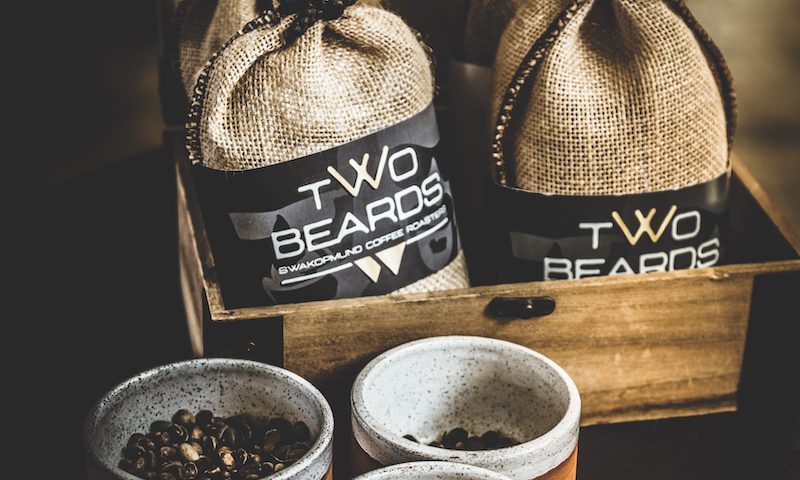Exploring Windhoek’s Katutura
August 20, 2019Wilderness Safaris: Travelling With a Purpose
August 22, 2019Text and Photographs Christie Keulder
Coffee is not only one of the world’s most popular non-alcoholic beverages, it is also – more so than anything else – responsible for kickstarting the world every morning and for getting everyone out the door and off to work. Without coffee, I, perhaps like many others, would simply be unemployable. David Letterman once revealed that if it had not been for coffee, he’d have no identifiable personality whatsoever.
Be that as it may, the world produces and consumes more coffee than ever before. In December last year the United States Department of Agriculture estimated that world coffee production for 2018/19 would increase by 15.6 million bags to a record 174.5 million bags.
Growth in the coffee market has been driven by a number of factors: the availability of a wide-range of coffee types, flavours and brewing styles; rising urbanisation and higher disposable incomes; and the increasing number of food outlets, retail stores and cafés that sell coffee.
So, perhaps it is no surprise then that Namibians are joining the global coffee market as consumers and coffee roasters. Slowtown Coffee Roasters was the first artisanal coffee roaster in Swakopmund, and now there is another: Two Beards Coffee Roasters.
Mark, the young man sitting across the table from me, has had his beard since he left school. Roy, his father, has a beard that dates back much further. Together this father and son duo established Two Beards Coffee Roasters in 2016.
The dream of one day roasting coffee full time started with advice from a close friend when Roy asked about early retirement. Roy took the words “make sure you have something to do from day one” to heart and purchased a roaster to pursue his passion for roasting coffee.
As with so many artisans, Roy and Mark’s journey started at home and without formal training as coffee roasters. Trial and error, reading and research brought experience and secured their first commercial clients. These were all local Swakopmund businesses looking for their own, unique signature blends of coffee
For Mark and Roy the key to excellent coffee lies not only in the quality of the beans, or the standards of farming, but in roasting the beans. Now this sounds simple enough, but as Mark often points out there is both a science and an art to roasting coffee. Once the beans have matured, they are removed from the coffee cherries (the pods that hold the seeds) and dried. These green-coloured coffee beans are packed into large sacks (usually), weighing 60 kilograms each. The green coffee beans do not smell like coffee at all – they have a beany, grassy aroma – but when roasted, these very same beans develop hundreds (yes, hundreds) of different aroma and flavour compounds. It is thus up to the skill and experience of the roaster to extract the best and most sought-after of these characteristics by applying variable heat at specific times during the process and thus bring out the unique flavours for each batch of coffee.
After watching Roy meticulously “reading the beans” for roast colour and what is commonly referred to in the industry as the First Crack, monitoring the Rate of Rise temperatures and, depending on the roast, the Second Crack, I could not help thinking how far we have come with our coffee. I still remember the way my long-deceased grandmother used to roast her coffee in a large cast iron pot over an open fire set up in the one corner of her homestead, after which it was my task to grind the beans using a cast iron mill mounted to the wall. No disrespect Ouma, but I think I like Roy and Mark’s roasts better.
Two Beards specialises in single origin, 100% pure Arabica coffees that reflect the true diversity of the world’s great coffee producing countries: Brazil, Colombia, Costa Rica, Guatemala, Mexico, Ethiopia, Kenya, Tanzania, Uganda, Rwanda and Indonesia, among others. If you are ever in need to discuss your coffee affairs, or just exchange your most recent ideas about the local artisan coffee movement, you’ll not only find the Two Beards most helpful and gregarious company, but you’ll also be able to enjoy a scrumptious meal in the Two Beards and a Saint Gourmet Coffee Bar and Bistro right below the Roastery where Radley – the Saint – offers a gourmet, café-style menu to go with a wide selection of coffees.
Two Beards Coffee Roasters and Two Beards and a Saint Gourmet Coffee Bar and Bistro are located on the outskirts of Swakopmund at Unit 6 Eastern Concepts, 5 Einstein Street, Swakopmund. Business hours are from 7h30 to 17h00 Monday to Friday, and from 7h30 to 14h30 on Saturdays.
FOR MORE DETAILS SEE:
Email: [email protected]
Telephone: +264 81 772 3757
Two Beards and a Saint Gourmet Coffee Bar and Bistro
Email: [email protected]
Telephone: +264 81 441 0255
This article was first published in the Winter 2019 issue of Travel News Namibia.



1 Comment
Hi, sent me price list for home use coffee, I have a history of buying a cup of coffee at the Arandis service station everyday, it keeps me awake and alert after sipping in a cup of coffee